This Article has been revised, edited and added to, by Poulomi Chakraborty.
- Comparing Webinars and Live Events
- Combining Webinars and Live Events for Maximum Impact
- Building Engagement Through Webinars and Live Events
- Enhancing Brand Credibility Through Webinars and Live Events
- Maximizing ROI from Webinars and Live Events
- Strategically Planning Your Events
- Choosing the Right Influencers
- Crafting Compelling Content
- Leveraging Multi-Channel Promotion
- Engaging Attendees Before, During, and After the Event
- Measuring and Analyzing Performance
- Repurposing Event Content
- Example: Maximizing ROI with a Multi-Channel Approach
- Example: Effective Live Event Strategy
- Overcoming Challenges in Webinars and Live Events
- Future Trends in Webinars and Live Events for Influencer Marketing
- Conclusion
In the digital age, influencer marketing has become a cornerstone of many successful marketing strategies. Brands leverage the power of influencers to reach new audiences, build trust, and drive engagement. Among the many tactics used in influencer marketing, webinars and live events have emerged as powerful tools. These interactive formats provide a unique opportunity for brands to connect with their audience in real-time, offering value, fostering relationships, and enhancing credibility.
Webinars and live events allow for deep, meaningful interactions that can significantly impact a brand’s success. They offer a dynamic way to engage with audiences, answer questions on the spot, and provide immediate value. This real-time engagement can be a game-changer, helping to convert curious prospects into loyal customers.
Comparing Webinars and Live Events
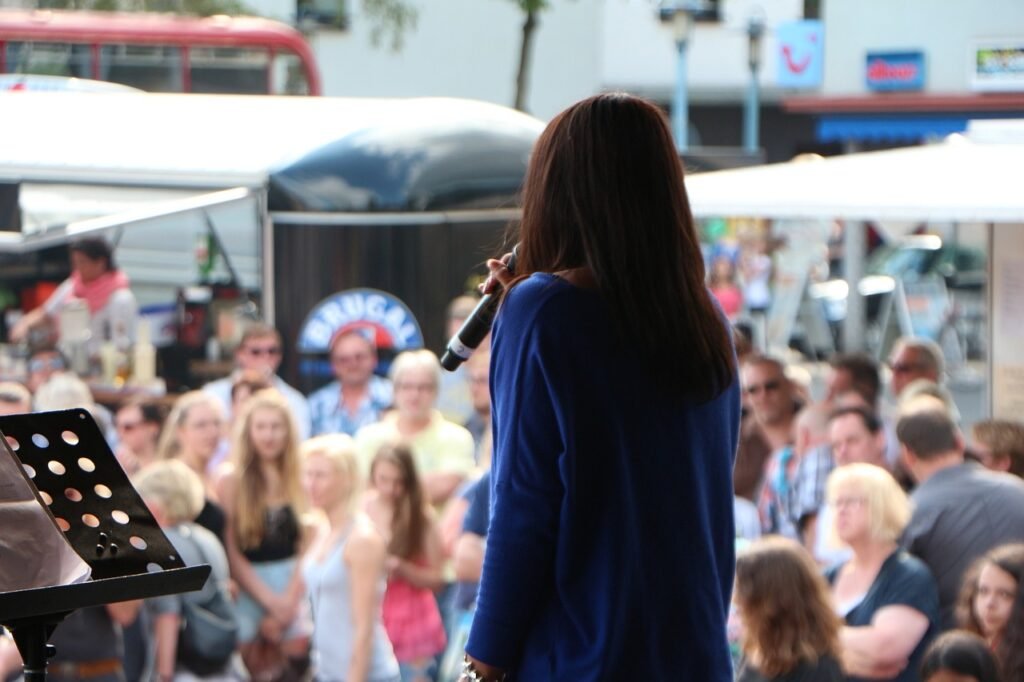
While both webinars and live events are excellent tools in influencer marketing, they have distinct features and benefits. Understanding these differences can help brands choose the right approach for their goals.
Webinars: The Power of Online Seminars
Webinars are online seminars that allow brands to reach a global audience. They are typically structured and focus on delivering educational content, making them ideal for B2B marketing. Webinars often feature expert speakers, detailed presentations, and interactive Q&A sessions. This format is perfect for diving deep into complex topics, providing in-depth information, and positioning the brand as a thought leader in its industry.
Benefits of Webinars
- Global Reach: Webinars eliminate geographical barriers, allowing brands to reach audiences worldwide.
- Cost-Effective: Hosting a webinar is generally more affordable than organizing a physical event.
- Convenience: Participants can join from the comfort of their homes or offices.
- Recorded Sessions: Webinars can be recorded and repurposed as on-demand content, extending their value.
- Data Insights: Webinars provide valuable data on attendee engagement and behavior.
Live Events: The Impact of Real-Time Interaction
Live events, on the other hand, offer a more dynamic and spontaneous form of engagement. These events can be held in person or streamed online, allowing for real-time interaction between the brand, the influencer, and the audience. Live events are perfect for product launches, Q&A sessions, and behind-the-scenes content. They create a sense of urgency and excitement, often leading to higher engagement rates.
Benefits of Live Events
- Real-Time Engagement: Live events offer immediate interaction, fostering a strong connection with the audience.
- Authenticity: The spontaneous nature of live events makes them feel more authentic and relatable.
- Increased Engagement: The urgency and excitement of live events often lead to higher viewer engagement.
- Versatility: Live events can be used for various purposes, from product launches to casual chats.
- Community Building: Live events create a sense of community among participants, enhancing brand loyalty.
Choosing the Right Format
When deciding between webinars and live events, brands need to consider their goals, audience, and content. Webinars are ideal for delivering structured, educational content and reaching a global audience. Live events, however, are better suited for creating buzz, engaging in real-time interaction, and building a community.
For example, a tech company launching a new software might benefit more from a webinar, where they can showcase the product’s features, provide detailed demonstrations, and answer technical questions. Conversely, a fashion brand unveiling a new collection might choose a live event to generate excitement, showcase the products in real-time, and interact with fashion influencers and fans.
Combining Webinars and Live Events for Maximum Impact
For the ultimate influencer marketing strategy, brands can combine both webinars and live events. This hybrid approach allows them to leverage the strengths of each format, reaching a wider audience and achieving diverse marketing goals. A brand might host a live event to create buzz around a product launch, followed by a webinar to provide in-depth information and answer detailed questions.
Example: A Hybrid Approach
Consider a beauty brand launching a new skincare line. They could start with a live event featuring a popular beauty influencer, demonstrating the products and engaging with fans in real-time. This event would create excitement and draw attention to the new line.
Following the live event, the brand could host a webinar with skincare experts, providing a deeper understanding of the products’ ingredients, benefits, and usage tips. This combination ensures that the brand not only captures initial interest but also educates and converts prospects into customers.
Building Engagement Through Webinars and Live Events
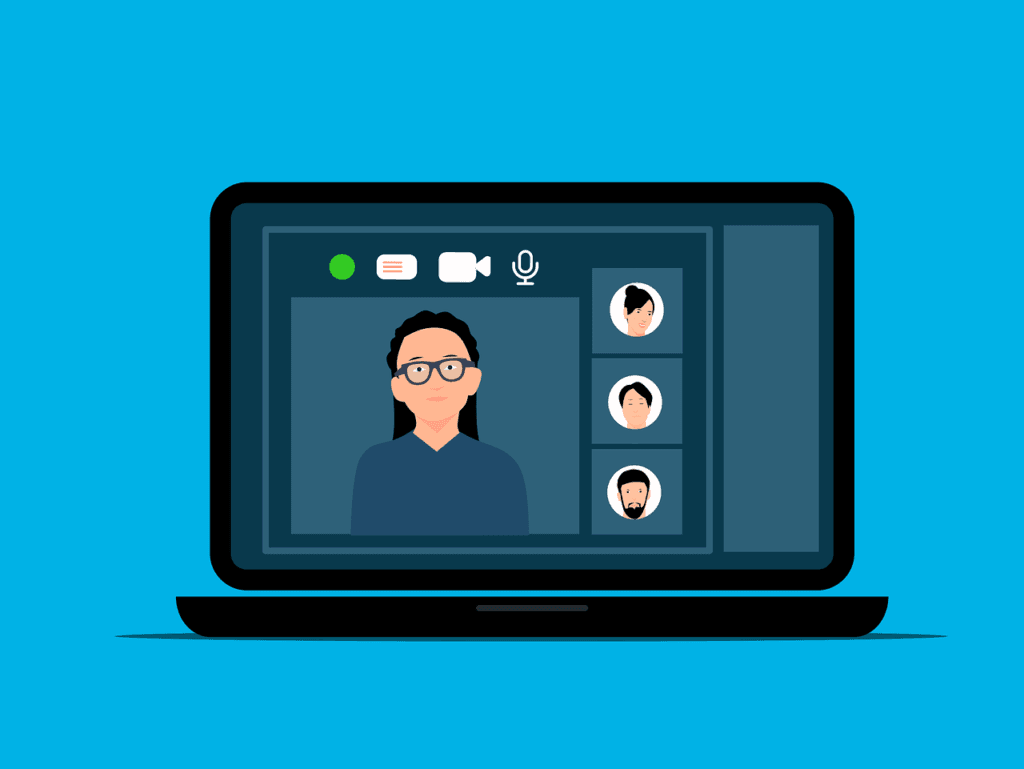
Creating Valuable Content
To make webinars and live events successful, the content must be valuable and relevant to the audience. When planning a webinar, it’s important to focus on educational topics that address specific pain points or interests of the target audience.
For instance, if a brand is targeting small business owners, a webinar on effective social media strategies or financial management tips could be highly appealing. The key is to deliver actionable insights that attendees can apply in their own businesses.
For live events, the focus should be on creating memorable and interactive experiences. This can involve product demonstrations, live Q&A sessions, and behind-the-scenes looks at the brand.
The goal is to create a sense of immediacy and excitement that keeps the audience engaged. For example, a fitness brand could host a live workout session with a well-known fitness influencer, allowing viewers to follow along and ask questions in real-time. This type of content not only provides value but also builds a stronger connection with the audience.
Leveraging Influencer Expertise
Influencers play a crucial role in both webinars and live events. Their expertise and credibility can enhance the content and attract a larger audience. When selecting influencers for these events, it’s important to choose individuals who align with the brand’s values and have a genuine connection with the audience.
For a webinar, an influencer with deep knowledge of the topic can provide valuable insights and lend credibility to the content. In a live event, an influencer’s personality and ability to engage with the audience are key to creating an enjoyable and interactive experience.
Collaborating with influencers involves more than just having them speak at an event. It’s important to work closely with them to plan the content, promote the event, and engage with the audience during and after the event.
This partnership ensures that the influencer’s voice is authentic and resonates with their followers, which can lead to higher engagement and better results for the brand.
Promoting Webinars and Live Events
Effective promotion is essential to the success of webinars and live events. Without proper promotion, even the most valuable content can go unnoticed.
The first step is to create a compelling event page that highlights the benefits of attending, features the influencers involved, and provides all necessary details. This page should be optimized for search engines to attract organic traffic.
Social media is a powerful tool for promoting these events. Brands should leverage their own channels as well as those of the influencers to reach a wider audience.
Posting regular updates, teasers, and reminders can help build anticipation and encourage registrations. Email marketing is another effective strategy, especially when targeting existing customers or subscribers. Sending personalized invitations and follow-up reminders can increase attendance rates.
Paid advertising, such as social media ads or search engine marketing, can also boost visibility and attract new audiences. Brands should target their ads based on demographics, interests, and behavior to reach the most relevant audience.
Additionally, partnering with industry publications or websites for event promotion can lend credibility and reach a highly targeted audience.
Engaging the Audience During the Event
Engagement during the event is crucial to its success. For webinars, interactive elements such as polls, Q&A sessions, and live chat can keep attendees engaged and make the experience more interactive.
Encouraging questions and comments throughout the webinar can create a dialogue between the presenter and the audience, making it more engaging and informative.
In live events, the spontaneous nature of the format offers numerous opportunities for engagement. Real-time interaction, such as answering questions on the spot, acknowledging comments, and even incorporating viewer suggestions into the content, can make the event feel more personal and dynamic.
Using multiple camera angles, interactive graphics, and live polls can also enhance the viewer experience.
Post-event engagement is equally important. Sending follow-up emails with a recording of the webinar or highlights from the live event can keep the conversation going. Encouraging attendees to share their thoughts on social media, participate in post-event surveys, and join related online communities can help maintain engagement and build a lasting relationship with the audience.
Measuring Success and Refining Strategies
Measuring the success of webinars and live events is essential for refining strategies and improving future events. Key performance indicators (KPIs) such as registration numbers, attendance rates, engagement levels, and post-event feedback can provide valuable insights into what worked well and what needs improvement.
Analyzing data from these events can help brands understand their audience better and tailor their content and approach accordingly.
For webinars, tracking metrics such as average viewing time, drop-off rates, and interaction levels during the event can provide a clear picture of audience engagement. Post-event surveys can offer qualitative feedback on the content, presentation, and overall experience.
This feedback can be used to improve future webinars and ensure they meet the audience’s needs and expectations.
Live events, with their dynamic and interactive nature, offer additional metrics such as real-time engagement, social media mentions, and viewer sentiment. Analyzing these metrics can help brands understand the impact of their live events and identify areas for improvement. Incorporating feedback from both the audience and influencers can help refine the event format, content, and promotional strategies for better results.
Enhancing Brand Credibility Through Webinars and Live Events

Building Trust and Authority
One of the most significant benefits of using webinars and live events in influencer marketing is the opportunity to build trust and authority. When a brand collaborates with a respected influencer to host a webinar or live event, it leverages the influencer’s credibility. This association helps to position the brand as an industry leader and a reliable source of information.
For instance, a health and wellness brand hosting a webinar with a renowned nutritionist can provide valuable insights into healthy living. The audience, already trusting the influencer’s expertise, will likely transfer that trust to the brand. This perceived authority can lead to increased brand loyalty and a stronger, more trusting relationship with the audience.
Providing Transparency and Authenticity
Webinars and live events offer a level of transparency and authenticity that pre-recorded content cannot match. Audiences appreciate the real-time, unfiltered nature of these events.
They can see the influencer and brand representatives as they are, without the polish of heavy editing. This authenticity fosters a deeper connection with the audience, who can ask questions and receive honest, immediate responses.
Transparency is particularly crucial in industries where trust is paramount, such as healthcare, finance, and technology. Hosting a live Q&A session where a tech company’s engineers answer user questions about a new product can reassure potential customers about the product’s capabilities and the company’s commitment to customer satisfaction. Similarly, a financial advisor discussing market trends in a live webinar can provide reassurance and expert advice to nervous investors.
Showcasing Expertise and Thought Leadership
Webinars, in particular, are excellent platforms for showcasing a brand’s expertise and thought leadership. By addressing complex topics, providing in-depth analysis, and sharing unique insights, a brand can demonstrate its knowledge and position itself as a leader in its field. This is particularly effective in B2B marketing, where decision-makers seek reliable and knowledgeable partners.
For example, a cybersecurity firm could host a webinar on emerging threats and best practices for protection. Featuring industry experts and sharing cutting-edge research, the firm can establish itself as a thought leader. This not only attracts potential clients but also earns the respect of peers and competitors.
Creating a Community Around the Brand
Live events excel in creating a sense of community among participants. The interactive nature of these events encourages audience members to engage with each other and the brand, fostering a sense of belonging. This community aspect can significantly enhance brand loyalty and advocacy.
For instance, a gaming company could host a live event featuring popular streamers playing their latest release. Fans can interact with the streamers, ask questions, and share their experiences with the game. This shared experience builds a community around the game and the brand, creating a loyal fanbase that is more likely to promote the brand to others.
Leveraging User-Generated Content
User-generated content (UGC) is a powerful tool for building credibility and engagement. Webinars and live events can generate a wealth of UGC, from attendee comments and questions to social media posts and reviews.
Encouraging participants to share their thoughts and experiences on social media, using event-specific hashtags, can amplify the event’s reach and impact.
Brands can also repurpose UGC in their marketing efforts, showcasing testimonials, reviews, and social media posts to highlight the event’s success and the audience’s positive feedback. This not only extends the event’s lifespan but also leverages the authentic voices of real users to build trust and credibility.
Example: A Successful Webinar Campaign
Consider the example of a software company that successfully used webinars to enhance its brand credibility. The company wanted to establish itself as a leader in artificial intelligence (AI) solutions. They partnered with leading AI experts and hosted a series of webinars on various AI-related topics, from machine learning to ethical considerations.
Each webinar featured detailed presentations, expert panel discussions, and interactive Q&A sessions. The company promoted the webinars through social media, email marketing, and industry partnerships, attracting a large and engaged audience. By consistently providing valuable and insightful content, the company positioned itself as a thought leader in AI.
The results were impressive. The webinars attracted thousands of attendees, generated significant social media buzz, and led to numerous inquiries and leads. The company’s reputation as an AI expert grew, resulting in increased sales and long-term partnerships.
Example: A Successful Live Event Campaign
A fashion brand used live events to build excitement and community around their new clothing line. They collaborated with a popular fashion influencer to host a live event showcasing the collection. The event included live product demonstrations, behind-the-scenes looks at the design process, and real-time interactions with the audience.
The influencer’s followers were invited to join the event, creating a buzz on social media. During the event, the influencer answered questions, provided styling tips, and shared their personal experiences with the brand. This real-time engagement created a sense of immediacy and excitement, leading to high viewer engagement and positive feedback.
The live event not only generated significant interest in the new collection but also strengthened the community around the brand. Fans felt a deeper connection with the brand and the influencer, resulting in increased loyalty and advocacy. The event was a resounding success, leading to higher sales and a stronger brand presence.

Maximizing ROI from Webinars and Live Events
Strategically Planning Your Events
To maximize return on investment (ROI) from webinars and live events, careful planning is essential. Start by defining clear goals for each event. Are you aiming to generate leads, build brand awareness, or establish thought leadership? Knowing your objectives will guide the content, format, and promotional strategies.
For example, if your goal is lead generation, ensure that your webinar or live event includes compelling calls to action (CTAs), such as signing up for a newsletter, downloading a whitepaper, or scheduling a consultation. If brand awareness is your primary objective, focus on creating engaging and shareable content that can reach a wider audience.
Choosing the Right Influencers
Selecting the right influencers is critical to the success of your webinars and live events. Look for influencers who not only have a large following but also align with your brand values and resonate with your target audience. An influencer with a highly engaged audience is often more valuable than one with a large but passive following.
For instance, a sustainable fashion brand might collaborate with an influencer known for their commitment to eco-friendly living. This alignment ensures that the influencer’s followers are likely to be interested in your brand, leading to higher engagement and better ROI.
Crafting Compelling Content
Content is king when it comes to webinars and live events. Craft content that is informative, engaging, and relevant to your audience. Consider incorporating various elements such as expert interviews, live demonstrations, case studies, and interactive Q&A sessions to keep the audience engaged.
For a webinar, prepare a detailed agenda and share it with attendees in advance. This helps set expectations and ensures that the audience knows what to look forward to. For live events, create a dynamic script that allows for spontaneity while keeping the event on track.
Leveraging Multi-Channel Promotion
Promoting your webinar or live event across multiple channels can significantly boost attendance and engagement. Use a mix of email marketing, social media, blog posts, and paid advertising to reach a broader audience. Partnering with influencers to promote the event on their channels can also extend your reach.
For example, an email campaign might include personalized invitations, reminders, and follow-up messages to keep potential attendees informed and engaged. On social media, use eye-catching visuals, engaging teasers, and event-specific hashtags to generate buzz.
Engaging Attendees Before, During, and After the Event
Engagement should not be limited to the event itself. Start engaging with your audience before the event by creating anticipation and excitement. Share behind-the-scenes content, teasers, and exclusive previews to build interest.
During the event, use interactive elements like polls, live chat, and Q&A sessions to keep the audience engaged. Acknowledge attendees’ contributions, respond to their questions, and create a dialogue. This real-time interaction enhances the viewer experience and builds a stronger connection with the brand.
After the event, continue the engagement by sending follow-up emails, sharing event highlights, and encouraging attendees to share their feedback on social media. Providing access to on-demand recordings or exclusive post-event content can extend the event’s value and keep the conversation going.
Measuring and Analyzing Performance
To understand the impact of your webinars and live events, measure and analyze their performance. Track key metrics such as registration and attendance rates, engagement levels, social media mentions, and post-event feedback. These insights can help you assess the event’s success and identify areas for improvement.
For webinars, analyze data such as the average viewing time, drop-off points, and interaction levels. Post-event surveys can provide qualitative feedback on the content, presentation, and overall experience. For live events, monitor real-time engagement metrics, social media activity, and viewer sentiment to gauge the event’s impact.
Repurposing Event Content
Repurposing content from webinars and live events can maximize their ROI. Recorded sessions can be turned into on-demand videos, blog posts, or social media snippets. This not only extends the lifespan of the content but also allows you to reach a wider audience who may have missed the live event.
For instance, a recorded webinar on digital marketing strategies can be edited into short video clips and shared on social media, each focusing on a specific tip or insight. A live event featuring a product launch can be turned into a blog post highlighting the key moments and viewer reactions.
Example: Maximizing ROI with a Multi-Channel Approach
Consider a SaaS company that successfully maximized ROI from its webinars by adopting a multi-channel promotion strategy. The company aimed to generate leads and establish itself as a thought leader in the industry. They partnered with influential tech bloggers and industry experts to host a series of webinars on emerging technology trends.
Promotion started weeks before the first webinar, with personalized email invitations sent to the company’s subscriber list, social media teasers, and blog posts. Influencers shared the event details on their channels, reaching a wider audience. During the webinars, interactive elements such as polls and live Q&A sessions kept the audience engaged.
After the webinars, the company sent follow-up emails with on-demand recordings and additional resources. They also repurposed the webinar content into blog posts, infographics, and social media snippets. This multi-channel approach not only attracted a large number of attendees but also generated valuable leads and positioned the company as an industry leader.
Example: Effective Live Event Strategy
A beverage company successfully used live events to boost brand awareness and engagement. They collaborated with a popular mixologist to host a live cocktail-making session. The event was promoted through social media, email marketing, and influencer channels, generating significant buzz.
During the live event, the mixologist demonstrated how to create various cocktails using the company’s products, answered viewers’ questions, and shared personal stories. The real-time interaction and entertaining format kept viewers engaged and excited.
Post-event, the company shared highlights and recipes on their blog and social media channels, encouraging viewers to recreate the cocktails at home. This not only extended the event’s reach but also kept the audience engaged with the brand. The event was a huge success, leading to increased brand awareness, social media engagement, and sales.
Overcoming Challenges in Webinars and Live Events
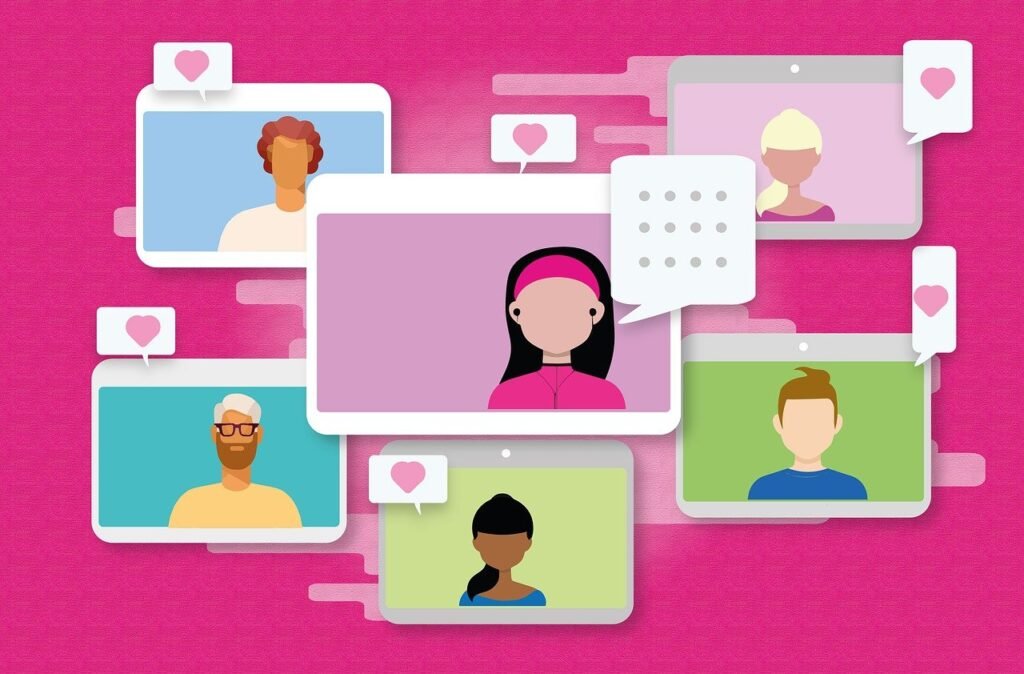
Addressing Technical Issues
Technical issues can significantly impact the success of webinars and live events. To mitigate these risks, thorough preparation is essential. Before the event, conduct a series of test runs to ensure that all equipment and software are functioning correctly.
This includes checking the audio and video quality, testing the internet connection, and ensuring that all interactive elements such as polls and Q&A features are working properly.
For webinars, it’s also crucial to have a backup plan in case of technical difficulties. This could include having a recorded version of the presentation that can be sent to attendees if the live stream fails.
For live events, ensure that there is technical support available during the event to address any issues promptly. Communicating clearly with attendees about what to do in case of technical problems can also help manage their expectations and reduce frustration.
Engaging a Diverse Audience
Engaging a diverse audience can be challenging, as different segments may have varying interests and preferences. To address this, it’s important to conduct thorough audience research before planning the event. Understanding the demographics, interests, and pain points of your audience can help tailor the content to meet their needs.
For webinars, consider segmenting the audience and creating targeted content for each group. This could involve hosting multiple sessions on different topics or levels of expertise. For live events, interactive elements such as live polls and Q&A sessions can help gauge audience interest and adjust the content in real-time.
Using inclusive language and ensuring that the content is accessible to all participants is also crucial. This includes providing closed captions for webinars and live events, offering content in multiple languages if necessary, and ensuring that the platform used is accessible to individuals with disabilities.
Maintaining Consistent Engagement
Keeping the audience engaged throughout a webinar or live event can be challenging, especially for longer sessions. To maintain engagement, it’s important to create a dynamic and interactive experience. This includes incorporating various content formats such as videos, slides, and live demonstrations, as well as interactive elements like polls, quizzes, and breakout sessions.
For webinars, breaking the content into shorter segments with interactive breaks can help keep the audience’s attention. Encouraging participation through live Q&A sessions and discussions can also make the experience more engaging. For live events, using multiple camera angles, real-time interactions, and incorporating audience feedback can create a more immersive experience.
It’s also important to monitor engagement levels throughout the event and be prepared to adjust the content if necessary. This could involve speeding up the presentation, adding more interactive elements, or addressing specific questions or concerns from the audience.
Measuring and Demonstrating ROI
Measuring the ROI of webinars and live events can be complex, but it’s essential for demonstrating their value and refining future strategies. To effectively measure ROI, it’s important to define clear metrics and KPIs that align with your goals. These could include registration and attendance rates, engagement levels, lead generation, and sales conversions.
Using analytics tools to track these metrics can provide valuable insights into the event’s performance. For webinars, track data such as viewing time, drop-off points, and interaction levels. For live events, monitor real-time engagement metrics, social media activity, and viewer sentiment.
Collecting and analyzing post-event feedback through surveys can also provide qualitative insights into the audience’s experience and satisfaction. This feedback can help identify areas for improvement and inform future event strategies.
Demonstrating ROI involves not only presenting these metrics but also translating them into business outcomes. For example, showing how a webinar led to a specific number of new leads or how a live event increased brand awareness and social media engagement can clearly demonstrate the event’s impact.
Navigating Platform Selection
Choosing the right platform for webinars and live events is crucial for ensuring a smooth and engaging experience. The platform should offer the necessary features to support your event’s goals, such as high-quality video streaming, interactive tools, and robust analytics.
When selecting a platform, consider factors such as ease of use, scalability, and security. The platform should be user-friendly for both the organizers and the attendees, and it should be able to handle the expected number of participants without performance issues. Security features such as encryption and data protection are also important, especially for events involving sensitive information.
Testing multiple platforms before making a decision can help ensure that you choose the best option for your needs. Reading reviews and seeking recommendations from other businesses or industry peers can also provide valuable insights.
Example: Overcoming Challenges in a Webinar Series
A financial services company faced several challenges in hosting a successful webinar series aimed at educating small business owners about financial management. Technical issues, diverse audience interests, and maintaining engagement were key concerns.
To address technical issues, the company conducted multiple test runs and had technical support on standby during the webinars. They also created a recorded version of each webinar as a backup.
To engage a diverse audience, the company segmented the content into beginner, intermediate, and advanced levels, ensuring that each segment received relevant and tailored information. Interactive elements such as live polls and Q&A sessions helped keep the audience engaged.
The company used analytics tools to track key metrics and gathered post-webinar feedback through surveys. This data helped them refine their content and approach for future webinars. The series was a success, generating valuable leads and positioning the company as a trusted financial advisor for small businesses.
Example: Overcoming Challenges in a Live Event
A cosmetics brand faced challenges in hosting a live event to launch a new product line. They needed to ensure a smooth technical experience, engage a diverse audience, and measure the event’s impact.
To address technical challenges, the brand partnered with a professional live streaming service and conducted several rehearsals. They also had a technical support team available during the event.
To engage a diverse audience, the brand featured a mix of live product demonstrations, interactive Q&A sessions, and behind-the-scenes content. They used multiple camera angles and real-time interactions to create a dynamic experience.
The brand tracked real-time engagement metrics, social media activity, and collected post-event feedback to measure the event’s success. The live event generated significant buzz, increased social media engagement, and boosted sales for the new product line.
Future Trends in Webinars and Live Events for Influencer Marketing

The Rise of Hybrid Events
As technology continues to evolve, hybrid events are becoming more popular. These events combine the benefits of both in-person and virtual experiences, allowing brands to reach a broader audience. Hybrid events can offer the best of both worlds: the immersive and interactive nature of live events with the accessibility and convenience of webinars.
For example, a tech company might host a product launch event that includes both a live audience and a virtual one. Attendees can participate in person, experiencing the product firsthand, while a global audience joins online, benefiting from live-streamed presentations and interactive Q&A sessions. This approach can significantly enhance engagement and reach.
Enhanced Interactivity with Augmented Reality (AR) and Virtual Reality (VR)
Augmented Reality (AR) and Virtual Reality (VR) are transforming the way brands engage with their audiences during webinars and live events. These technologies can create immersive experiences that go beyond traditional formats, offering new ways for audiences to interact with content.
For instance, a fashion brand could use AR to allow virtual attendees to “try on” clothes during a live event, or a real estate company could use VR to offer virtual property tours during a webinar. These interactive experiences can increase engagement and provide a unique value proposition, setting the brand apart from competitors.
Personalized Content Experiences
Personalization is a growing trend in all areas of marketing, and webinars and live events are no exception. By leveraging data and analytics, brands can create personalized content experiences that cater to the specific interests and preferences of their audience.
For example, a fitness brand hosting a webinar series might segment its audience based on fitness goals, offering tailored content for weight loss, muscle building, or general wellness. During the event, personalized polls and interactive elements can further enhance the experience, making attendees feel valued and understood.
Integration with E-commerce
Integrating e-commerce with webinars and live events is another trend gaining traction. This approach allows brands to turn engagement into immediate sales opportunities, creating a seamless shopping experience for attendees.
A beauty brand, for example, could host a live event featuring a popular makeup artist who demonstrates new products. Attendees can purchase the featured products directly through the event platform, taking advantage of special discounts or exclusive offers. This integration can drive sales and provide a convenient shopping experience for consumers.
Leveraging Data Analytics for Insights and Optimization
Data analytics plays a crucial role in optimizing webinars and live events. By analyzing data from these events, brands can gain valuable insights into audience behavior, preferences, and engagement levels. This information can be used to refine future events, improve content strategies, and enhance overall marketing efforts.
For instance, tracking metrics such as registration rates, attendance levels, and interaction patterns can help identify what resonates with the audience and what doesn’t. Brands can use these insights to tailor content, adjust formats, and implement new strategies that drive better results.
Sustainability and Eco-Friendly Practices
Sustainability is becoming increasingly important to consumers, and brands are responding by incorporating eco-friendly practices into their events. Virtual and hybrid events inherently reduce the carbon footprint associated with travel and physical venues, making them a more sustainable option.
Brands can further emphasize their commitment to sustainability by using eco-friendly materials for any physical components of their events, such as promotional items or packaging. Highlighting these efforts during the event can resonate with environmentally conscious consumers and enhance the brand’s reputation.
Example: Embracing Future Trends
A global electronics brand successfully embraced several future trends in a recent hybrid event to launch their latest smartphone. The event featured both an in-person audience and a live-streamed virtual component, reaching attendees worldwide. They integrated AR technology, allowing virtual attendees to explore the phone’s features in a 3D environment.
Personalized content experiences were offered, with different sessions tailored to various user interests, such as photography, gaming, and productivity. The event platform included integrated e-commerce, enabling attendees to pre-order the phone directly during the event, with special incentives for early buyers.
By leveraging data analytics, the brand tracked engagement levels and audience feedback in real-time, using these insights to adjust the event flow and enhance the overall experience. The event’s success was evident in the high engagement rates, positive feedback, and significant pre-order sales.
Conclusion
Webinars and live events are powerful tools in the influencer marketing toolkit, offering unique opportunities for real-time engagement, trust-building, and content delivery. As technology and consumer preferences evolve, these events will continue to adapt, offering new and innovative ways for brands to connect with their audiences.
By strategically planning events, selecting the right influencers, crafting compelling content, and leveraging multi-channel promotion, brands can maximize the impact of their webinars and live events. Overcoming challenges and staying ahead of trends will ensure that these events not only meet current marketing goals but also pave the way for future success.
The key to success lies in continuous learning and adaptation. As brands experiment with new formats, technologies, and strategies, they will discover what resonates best with their audience, creating memorable and impactful experiences that drive long-term engagement and growth.
Read Next
- Affiliate Marketing for the Fitness Industry: Promoting Workouts and Health Supplements
- The Role of Podcasts in Affiliate Marketing: Engaging Listeners and Earning Commissions
- Affiliate Marketing for the Real Estate Sector: Promoting Properties and Services
- Affiliate Marketing in the Age of Ad Blockers: Overcoming Challenges and Staying Relevant
- The Importance of Ethical Practices in Affiliate Marketing: Building Trust and Credibility










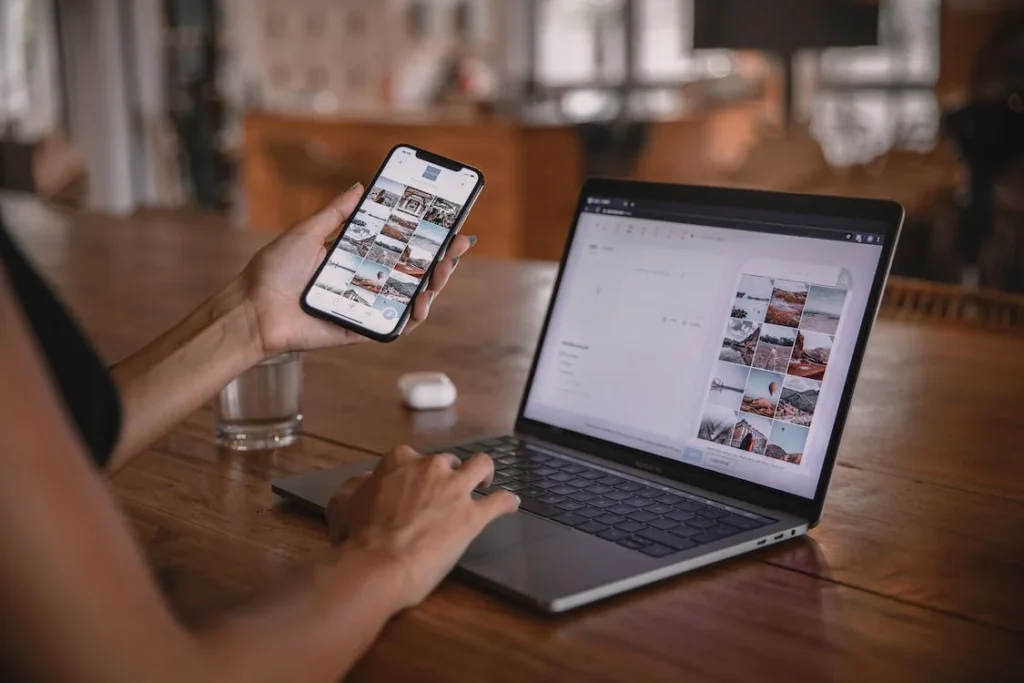
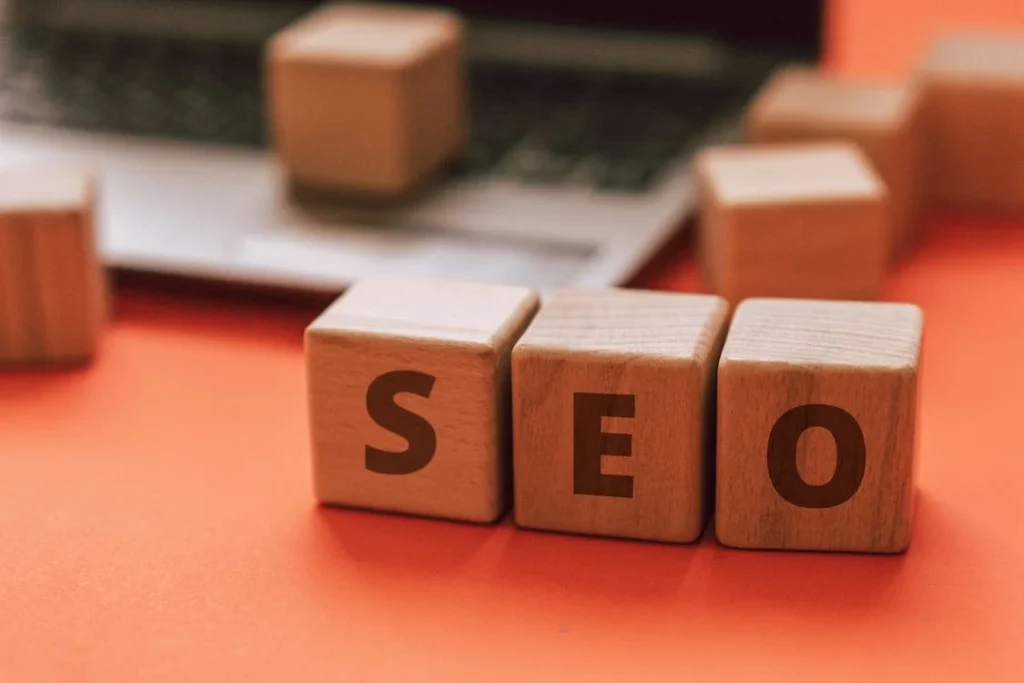
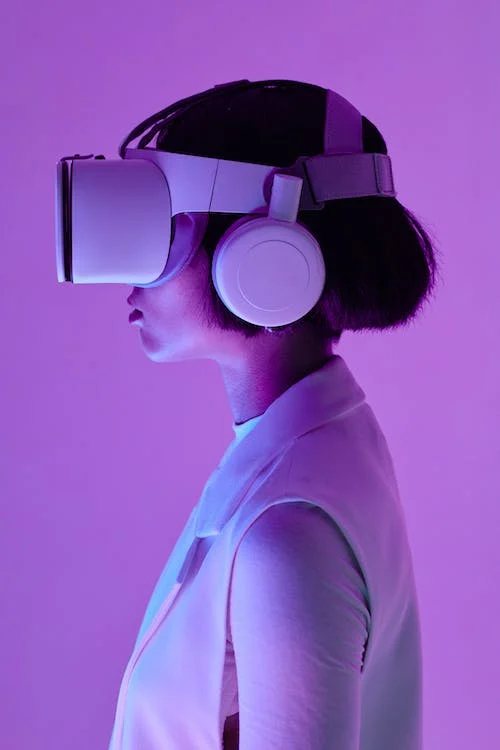



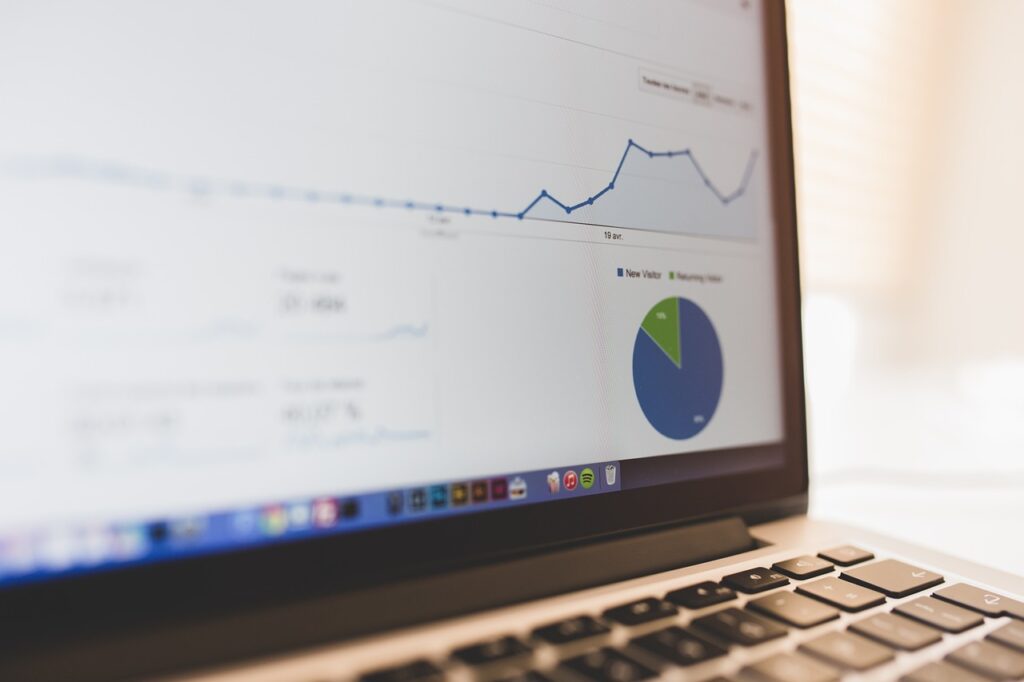





Comments are closed.